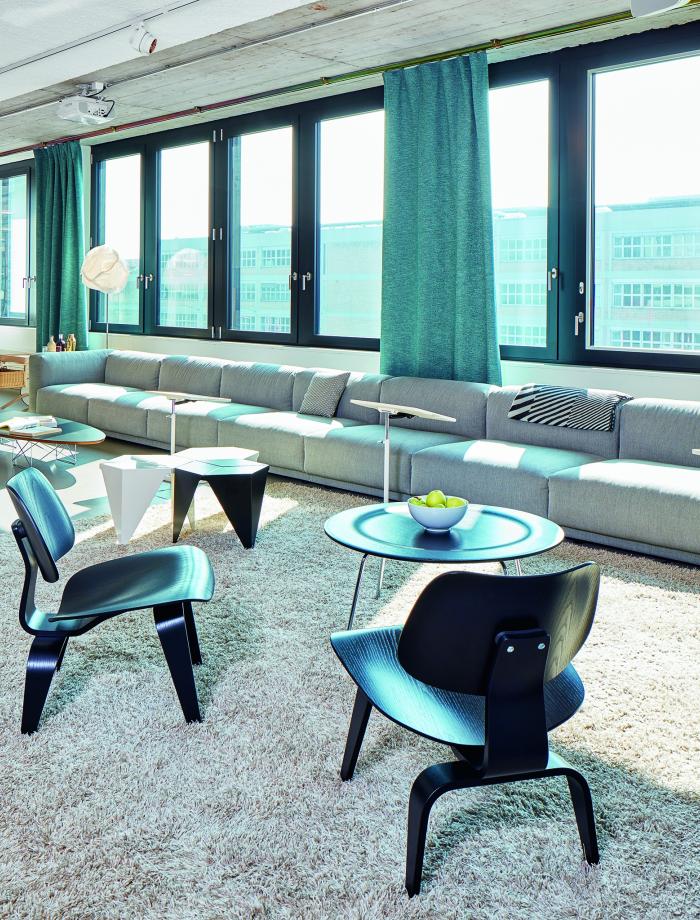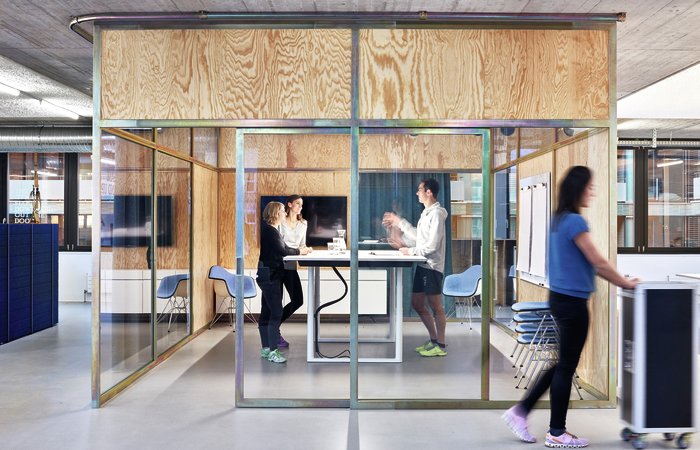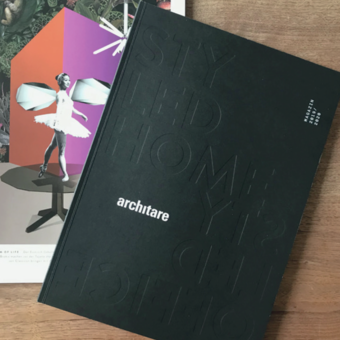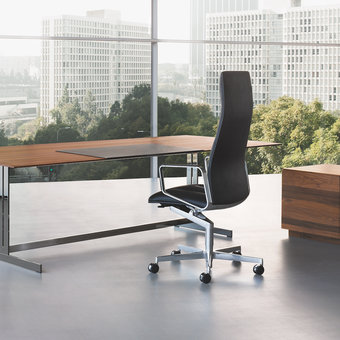Barbara Benz talks with Dr Stefan Rief “Meeting rooms need to be seen as productive spaces”, says Dr Stefan Rief, Head of the Competence Centre Workspace Innovation at the Fraunhofer Institute of Labour Economics and Organisation, in short: IAO, in Stuttgart.
Let's Work together
What role does light play?
Light is essential. This too, however, depends on the task at hand. Warmer light promotes creative thinking and improves the learning capacity when reading, whereas colder light promotes communication. People in a room are flexible, but the infrastructure unfortunately is not.
This is why it is important to create rooms that send a message.
Light is a great way to do so.
How important are technological factors?
I consider video conferences very important. Here, lighting and the illumination level, but also the perspective, are important: Do I look at the conversation partner from the bottom up or from the top down? There is a very old study that recreated a negotiation as a video conference. The result: The chances of negotiation success are 85% higher when I negotiate from an angle slightly slanting downwards. This is well known from cinema, where perspectives play a vital role.
Is there an ideal meeting size?
The right amount of participants is necessary for the task – but at the same time do not include too many people. If the meeting e.g. concerns knowledge or expertise development, each additional person involved just increases the duration of the meeting. If all people speak, the knowledge potential only rises by a little bit, while the effort necessary for exchange increases. It is therefore worthwhile to consider in advance who will contribute additional know-how or decision-making power. I believe that we often include too many people when we do not dare decide and implement things by ourselves or in our own small circle.
Do you often look at the United States for your work?
The tech companies from Silicon Valley are exciting. These examples show the extent to which spatial elements are valued. As a rule, however, only one or two generations work there simultaneously – these businesses therefore more or less have campus cultures, where it is important to spend a lot of time with one another. The rooms are thus designed with loving detail. Room is cleared out for a creative corner, and it is designed accordingly. Creative space is not forced – making a designated creative space by shoving a red couch between four desks. Here, one can see how consistently this is implemented.
What exactly does efficiency mean in a meeting?
Sensible use of the resource “human being”. People should make it clear to themselves: If I want to order something for the company that costs 30 euro, I naturally have to follow an approval process. However, everyone has the right to call a meeting. With three, four, five, or six participants, burning through their wages for one, two, or three hours. That is quite disproportionate, considering that the smallest euro amounts need to be approved beforehand on the other side. Meetings are embedded into a culture of communication and can be efficiently influenced spatially. I know a company that very purposefully stimulates the informal and spontaneous encounter. This results in a savings of around one-third of all scheduled meeting time.
What are the weaknesses of the meeting situations of German companies?
I personally believe that a lot of blame befalls the rooms themselves. They are often too dry, too densely furnished, not offering enough access to media, to tools, and above all to visualisation aids. A meeting room measuring 15 sqm is often filled with ten people – a surface area usually shared by two colleagues as a workspace. Then, lighting and ventilation are often very bad.
A study has shown that the room and spatial situation contribute just as much to the success of a meeting as the moderation.

“This needs to therefore be considered when they are conceived and designed.” Together with his team of twelve, the architect and occupational scientist researches how work changes. Here, a vital component is the interplay between task and spatial or technical infrastructure. In his conversation with Barbara Benz, he explains how these influence our motivation and capability to perform.
Why do meetings need to be tested on their efficiency?
Because we spend an unbelievable amount of time in meetings. Between 10% and 90% of our time, depending on task and seniority. Larger companies and positions higher up the hierarchy mean more time spent in meetings. Some employees even spend more time in meetings than at their own desks – trending upwards. Research shows that meetings involving employees from more than two hierarchy levels are often unproductive. Employees start to focus on how they represent themselves. Many companies have therefore introduced meeting cascades – a sensible approach.
How can efficiency be measured?
That is not an easy question to answer, for no two meetings are the same. Some meetings concern quick coordination, others are creative, deal with social issues, the resolution of conflicts, or decision-taking processes. What is or isn’t efficient depends on the result and the task of the meeting.
This means that you also analyse the quality of a meeting?
Yes, using basic factors such as how satisfied the participants are with the result. Then we consider the relative length of the meeting and the level of motivation afterwards. If I were to, for example, visualise a lot and even manage to directly provide all participants with a visual protocol after the meeting, the resulting efficiency will be a lot greater than if they had to wait for three, four, even five days for a protocol.
Are there good examples from other countries?
The Scandinavian countries and also Holland are above all trying out flexible work at various locations with a certain nonchalance. In Switzerland, they are one step behind this trend, but they in turn implement it with very consistent design and quality.
And how are we doing?
We often do it half-heartedly: some diversity, a little bit of colour, a splash of creativity. In my opinion, we can be a bit more brave, experimental, and free. We should trust ourselves more, try out things – in the end it is not just about the wellbeing of people but also about generating performance and creativity.
Can you think of a company that tackled this issue with great skill?
The first example that comes into mind is the BMW plant in Leipzig – it has been very consistently designed for people to encounter each other. Adidas is another example of great consistency. A strong community and campus, where people want to spend time, with the right instruments to develop personal skills and flexibility. If I want to attract the best textile engineers and designers, I need to in turn offer them an experience. And Herzogenaurach is only limitedly attractive for a 30-year-old or that 20-something rising star. We do have some great examples in Germany – a trip to the Valley is not strictly necessary.

Photo: ©
Vitra
Nimbus Group /
Brigida González
Eduardo Perez




